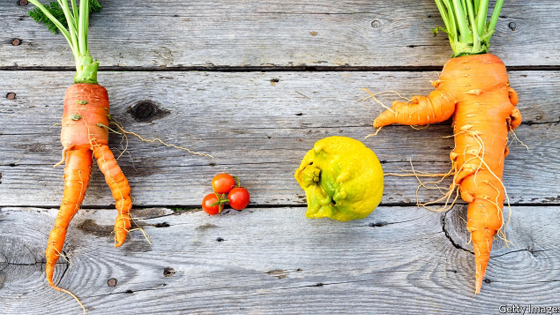A new market for old and ugly fruit and vegetables takes shape

No one knows quite how much fruit and vegetable produce never reaches the grocery checkout till. A fifth perhaps—or maybe twice that—is judged to be beneath commercial standards. So it is put to use as animal-feed or compost, or simply thrown away in a landfill. This infuriates those appalled at waste. Their outrage, however, has not been enough to create for unwanted fruit and vegetable the kind of sophisticated market that exists for products with more obvious uses, such as securities, currencies, metals, oil and unsullied agriculture. That is starting to change. Conventional commodity exchanges favour bulk trading in undifferentiated products. Food shops mostly prefer the best quality fruit and vegetables, or slightly lower-quality goods sold for a bit less. After all, stocking shelves with unattractive items is rarely a good retail strategy. Even the most cost-conscious shopper might blanch at a shop full of rows of degraded food, and operating costs would be high because of the need to monitor the produce, which can lose value by the hour. But as with much that is ugly, there is value in the products, particularly when the aesthetic flaws are the only ones. Berries can be too small, cucumbers crooked, bananas fat—and all can be bruised or blemished—without harming their taste or health benefits. A truly ugly tomato can still be perfect for a juice or a sauce.
The emerging companies have had to overcome four operational challenges, observes Elliot Rabinovich, a professor at Arizona State University who, with his colleague, Tim Richards, has received a grant from the Department of Agriculture (USDA) to study how to develop such businesses. The first is to systematize distinctions in quality that can allow useful pricing. The second is efficient distribution, since the deteriorating products must reach customers quickly and, as cost is an important aspect of their appeal, cheaply. Third, liability must be sorted out. Products may arrive too old to be usable and even in some cases spoiled and dangerous. A routine mismatch in payment terms between suppliers and the ultimate users, Mr. Rabinovich notes, can leave the intermediary responsible, at least on paper, for inventory, even if it never touches the products. That can have the odd consequence of inadvertently making the intermediary a food-seller, falling under the regulatory umbrella of the USDA.
Finally, there is profitability. Small growers have often found substandard produce too costly to handle. Some worry that even if they earn a bit on these kinds of produce that may eat into the sales of their pretty stuff. Mr. Rabinovich says such concerns are likely to be tackled as the market gains scale, enabling more variety (pleasing users) and more demand (pleasing providers). Slowly, ideas on better ways to run one of the world's oldest markets, the trade in food, are bearing fruit.
Source: https://www.economist.com/finance-and-economics/2018/01/11/a-new-market-for-old-and-ugly-fruit-and-vegetables-takes-shape

Image Source : https://www.economist.com/finance-and-economics/2018/01/11/a-new-market-for-old-and-ugly-fruit-and-vegetables-takes-shape

